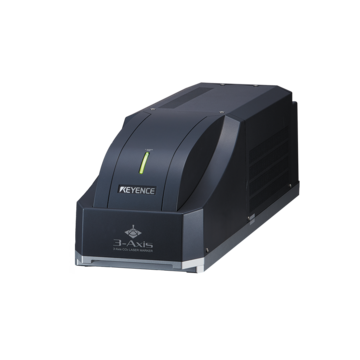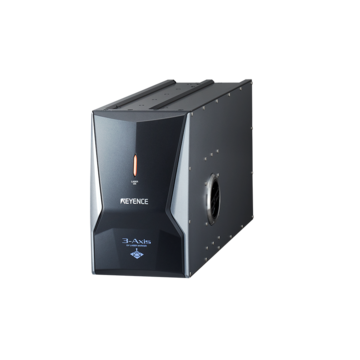Laser Marking Systems / Laser Markers
Glass Engraving
-
Tags:
- Laser Etching , Laser Engraving , Automotive
Although glassmaking began thousands of years ago, glass continues to be used extensively by many manufacturers and businesses. This raw material is critical for producing windows, electronics, bottles and tablewares, packaging, and more. Regardless of the industry or application involved, engraving glass is often a necessary part of production for aesthetics, functionality, and traceability.
What is Glass Engraving?
Glass engraving is the process of creating a design on glass by removing material. Glass engraving ranges across industries—from decoration, automotive, food, glassware, and more. Designs include traceability marks, expiration dates, product labels, logos, textures, and serial numbers.
Diamond ball burrs are a common glass engraver choice. However, diamond ball burrs require lots of time, a steady hand, and uninterrupted focus. These challenges are why many technicians opt for glass laser engraving with laser marking machines. Laser marking machines use a focused beam of light in order to create a white contrasting "frosted" look on glass, similar to what is achieved through sandblasting.
Using a laser marking machine as a glass engraver is an automated, damage-free, and user-friendly alternative.




White Marking
White marking is a common method for adding decorative logos, pictures, or text onto glassware. Creating a white mark with glass laser engraving is achieved by using a CO2 laser. The white appearance is created by generating tiny cracks on the surface of soda glass. The tiny cracks are done gently by the laser by repeated marking to create the cracks using low power. KEYENCE’s optimal glass engraving machine for white marking is the CO2 Laser Marker ML-Z Series.
Transparent Marking
Transparent marking is frequently used for adding texture to a glass product. Creating a transparent mark with glass laser engraving is achieved by using a UV laser. The transparent appearance is done by gently melting the surface of quartz glass. Since quartz glass is heat resistant, but glass is fragile to cracks, the mark is achieved by slow marking at high power. KEYENCE offers a glass engraving machine for transparent marking, the UV Laser Marker MD-U Series.
Types of Laser Glass Engraving
There are two types of lasers used for glass laser engraving: CO2 lasers and UV lasers. Each has high absorption levels and specialized processes for marking.
UV Laser Engraving
UV laser marking works by converting a 1064 nm laser into a 355 nm laser. The 1064 nm laser passes through two crystals and minimizes the wavelength into a 355 nm laser for minimal heat stress and high absorption. The 355 nm laser breaks the bonds directly instead of ruining the base material. KEYENCE’s UV laser is the UV Laser MD-U Series.
CO2 Laser Engraving
A CO2 laser works by using heat to process CO2 in a tube. Then, the electrical discharge in the tube generates plasma between a reflective mirror and the output coupler. Next, the plasma hits materials, absorbing the light. KEYENCE’s ML-Z Series is the CO2 solution in our lineup .
Get detailed information on our products by downloading our catalog.
View Catalog

Benefits of Laser Engraving Glass vs. Alternative Glass Engraving Methods
Environmentally Friendly
Glass laser engraving doesn’t use any consumables or produce toxic waste, unlike alternatives that leave behind toxic chemicals and produce waste.
Cost-Effective
Using a laser for glass engraving is faster than alternative engraving methods, ensures uniformity, and doesn’t use extra costly materials.
Alternative methods like using chemicals or diamond ball burrs are lengthy processes requiring multiple steps. These methods are also manual and are susceptible to human error. The time a laborer takes to finish one glass product is equal to laser engraving hundreds of glass products.
Precise
Laser beams are more precise than alternative glass engraving methods. Thin beam models focus directly on the target and don’t cause additional swelling. This extra precision brings a great degree of repeatability and consistency, while also creating a fully automatable marking process.
Advantages of KEYENCE’s Laser Glass Engraving
Quality Adjustment Level
When glass laser engraving, there are two markings: white marks or transparency marks. White and transparency marks require different speeds and powers.
For this, laser markers MD-U and ML-Z allow for easy adjustment. The levels are Top Speed, High Speed, Standard, High Quality, and Top Quality.
Short Wavelength Model
Precision with glass engraving is essential. Although glass is heat resistant, it is fragile and susceptible to cracks. The short wavelength model allows for automated, precise marking with shallow engraving and less surface swelling. Because of this, larger cracks that could end up damaging the product in the long run.
3-Axis Control
Glass comes in a variety of shapes, sizes, and uses. For instance, drinkware, decorations, personalized gifts, or industrial projects like curved windows.
Oftentimes in glass marking, some degree of a 3rd dimension is brought into play when marking. This generally means some kind of external motion is required in order to present the part correctly to the marking machine. KEYENCE laser markers, on the other hand, have built in 3-Axis controls.
With the 3-Axis control used in KEYENCE’s ML-Z and MD-U Series, any object can be marked. The 3-Axis control autofocuses the focal point for distortion-free marking no matter the shape, including step, inclined surface, cylinder, and circular cone.
Ready to Use KEYENCE’s Laser Marking Machines?
At KEYENCE, we want your glass marking endeavors to be seamless without any extra steps that slow down your manufacturing process. Regardless of your industry, we want to help with your glass engraving. Contact us today to get started with incorporating a laser marking machine into your glass processes.










